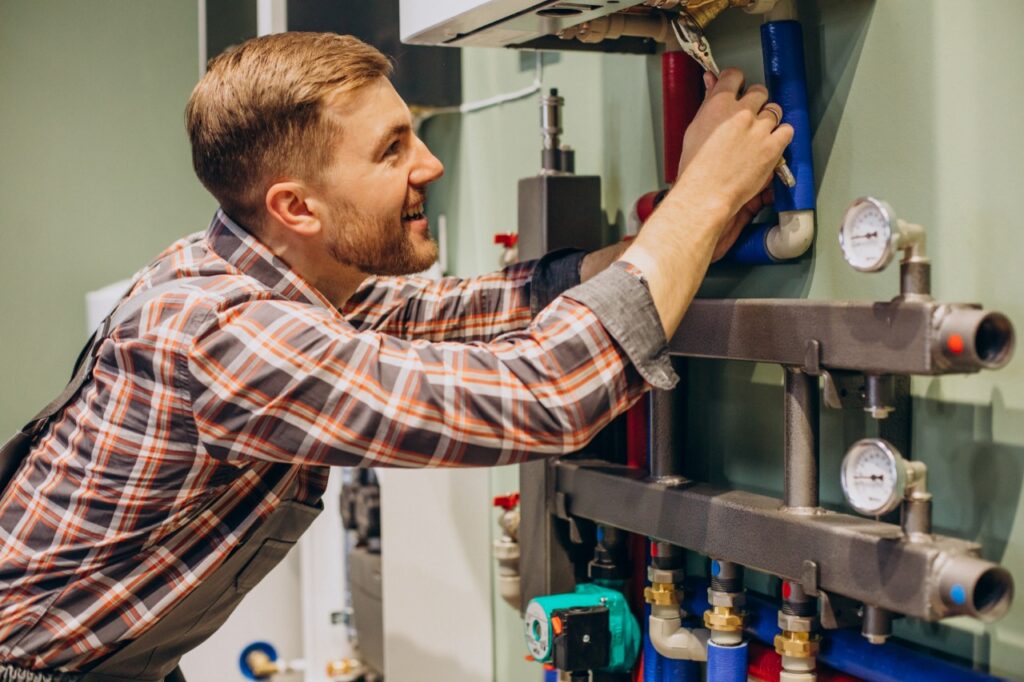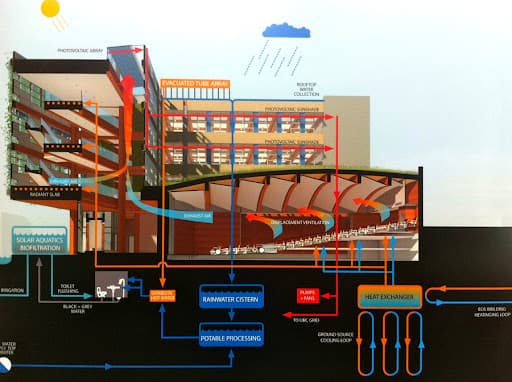The Basics of Your House's Plumbing System Anatomy
Click HereListed here further down you can get lots of brilliant expertise about Plumbing Installation 101: All You Need to Know.

Understanding how your home's plumbing system functions is necessary for each property owner. From delivering clean water for drinking, food preparation, and bathing to securely removing wastewater, a well-kept pipes system is critical for your family's health and wellness and convenience. In this comprehensive overview, we'll explore the intricate network that composes your home's plumbing and deal pointers on maintenance, upgrades, and dealing with typical concerns.
Introduction
Your home's pipes system is greater than simply a network of pipes; it's a complex system that ensures you have accessibility to tidy water and reliable wastewater elimination. Understanding its components and just how they work together can help you avoid expensive repair services and make certain everything runs smoothly.
Basic Components of a Plumbing System
Pipes and Tubing
At the heart of your plumbing system are the pipes and tubing that carry water throughout your home. These can be made of various materials such as copper, PVC, or PEX, each with its advantages in terms of toughness and cost-effectiveness.
Fixtures: Sinks, Toilets, Showers, etc.
Fixtures like sinks, bathrooms, showers, and tubs are where water is utilized in your home. Understanding how these fixtures connect to the pipes system assists in identifying problems and planning upgrades.
Valves and Shut-off Factors
Shutoffs regulate the circulation of water in your pipes system. Shut-off shutoffs are vital throughout emergencies or when you need to make repairs, permitting you to separate parts of the system without interrupting water flow to the entire home.
Water System System
Main Water Line
The major water line links your home to the metropolitan supply of water or a personal well. It's where water enters your home and is distributed to various components.
Water Meter and Stress Regulator
The water meter steps your water usage, while a pressure regulatory authority makes sure that water moves at a secure pressure throughout your home's plumbing system, protecting against damages to pipes and fixtures.
Cold Water vs. Warm water Lines
Recognizing the difference between cold water lines, which provide water directly from the main, and warm water lines, which bring heated water from the water heater, aids in fixing and planning for upgrades.
Water drainage System
Drain Pipes Pipeline and Traps
Drain pipes lug wastewater away from sinks, showers, and commodes to the drain or septic tank. Catches stop sewer gases from entering your home and additionally catch debris that can cause obstructions.
Ventilation Pipes
Air flow pipes permit air right into the drainage system, avoiding suction that could reduce drain and cause catches to empty. Appropriate ventilation is crucial for maintaining the honesty of your plumbing system.
Relevance of Appropriate Drainage
Ensuring appropriate drainage prevents back-ups and water damage. Consistently cleaning up drains and preserving catches can stop costly repairs and prolong the life of your plumbing system.
Water Heater
Sorts Of Water Heaters
Hot water heater can be tankless or traditional tank-style. Tankless heating units warm water as needed, while tanks keep warmed water for immediate usage.
Just How Water Heaters Connect to the Pipes System
Recognizing just how water heaters link to both the cold water supply and warm water distribution lines aids in diagnosing problems like not enough warm water or leaks.
Maintenance Tips for Water Heaters
Consistently flushing your hot water heater to get rid of debris, checking the temperature level settings, and checking for leakages can extend its life expectancy and boost energy efficiency.
Typical Pipes Concerns
Leaks and Their Causes
Leakages can happen as a result of aging pipes, loosened installations, or high water pressure. Dealing with leakages without delay prevents water damage and mold growth.
Blockages and Clogs
Clogs in drains and bathrooms are usually caused by flushing non-flushable products or an accumulation of oil and hair. Utilizing drainpipe displays and bearing in mind what goes down your drains can protect against clogs.
Signs of Plumbing Issues to Expect
Low tide stress, slow-moving drains, foul odors, or unusually high water bills are signs of potential plumbing issues that ought to be attended to without delay.
Pipes Maintenance Tips
Routine Assessments and Checks
Arrange yearly pipes assessments to capture issues early. Search for signs of leaks, corrosion, or mineral buildup in faucets and showerheads.
DIY Upkeep Tasks
Simple tasks like cleaning faucet aerators, checking for toilet leakages utilizing dye tablets, or insulating exposed pipes in cold climates can protect against significant pipes concerns.
When to Call a Specialist Plumbing
Know when a pipes problem requires professional proficiency. Attempting complicated repair work without proper knowledge can lead to even more damages and higher repair work costs.
Updating Your Pipes System
Reasons for Updating
Upgrading to water-efficient fixtures or changing old pipelines can enhance water quality, minimize water expenses, and increase the worth of your home.
Modern Pipes Technologies and Their Benefits
Explore technologies like clever leakage detectors, water-saving toilets, and energy-efficient water heaters that can save cash and decrease ecological influence.
Expense Considerations and ROI
Determine the upfront prices versus long-lasting savings when considering pipes upgrades. Numerous upgrades pay for themselves via decreased utility expenses and less repair services.
Environmental Influence and Preservation
Water-Saving Fixtures and Devices
Mounting low-flow taps, showerheads, and bathrooms can considerably lower water usage without sacrificing efficiency.
Tips for Decreasing Water Use
Easy habits like repairing leakages promptly, taking much shorter showers, and running full lots of laundry and recipes can preserve water and lower your energy bills.
Eco-Friendly Pipes Options
Think about lasting plumbing products like bamboo for flooring, which is durable and green, or recycled glass for counter tops.
Emergency Readiness
Steps to Take During a Pipes Emergency situation
Know where your shut-off valves lie and how to switch off the water supply in case of a ruptured pipe or major leakage.
Significance of Having Emergency Situation Calls Handy
Keep get in touch with information for regional plumbing professionals or emergency services easily offered for quick feedback during a pipes situation.
DIY Emergency Situation Fixes (When Applicable).
Short-lived repairs like using duct tape to spot a dripping pipe or putting a pail under a leaking tap can minimize damage up until a specialist plumbing arrives.
Conclusion.
Understanding the composition of your home's pipes system equips you to keep it effectively, saving time and money on repair services. By adhering to regular upkeep regimens and staying informed regarding contemporary plumbing innovations, you can guarantee your pipes system operates efficiently for several years to come.
Exploring Your Homes Plumbing Anatomy
Water Supply System
Main Water Line: This is where water enters your home from the municipal supply or a private well.
Water Meter: Typically located near where the main water line enters the property, it measures the amount of water used.
Shutoff Valve: It s crucial to know where this is in case of emergencies. It allows you to turn off the water supply to the entire house.
Pipes and Fittings: These distribute water throughout your home. Materials can include copper, PVC, or PEX.
Drain-Waste-Vent (DWV) System
Drains: Located in sinks, showers, and tubs, these carry wastewater away.
Traps: U-shaped pipes under sinks that hold standing water, blocking sewer gases from entering the home.
Vents: Pipes that lead from the DWV system to the outside, preventing vacuum formation and allowing gases to escape.
Sewer Line: Carries all wastewater from the home to the municipal sewer system or a septic tank.
Fixtures and Appliances
Sinks, Toilets, and Showers
Dishwashers and Washing Machines
Water Heaters
Maintenance Tips
Regularly check for leaks in exposed pipes and around fixtures.
Inspect the water heater annually for signs of wear.
Clean drains and traps to prevent clogs and odors.
Know how to shut off water to individual fixtures.
When to Call a Professional
Major leaks or burst pipes
Installation of new pipes or fixtures
Septic tank issues
Remodeling projects that involve plumbing changes
Conclusion
Understanding the anatomy of your home's plumbing is key to maintaining a functional and efficient system. Regular checks and knowing when to call in the experts can save you time, money, and stress.
https://www.mavyn.com/blog/exploring-your-homes-plumbing-anatomy

Exploring Your Homes Plumbing Anatomy
Water Supply System
Drain-Waste-Vent (DWV) System
Fixtures and Appliances
Maintenance Tips
When to Call a Professional
Conclusion
Understanding the anatomy of your home's plumbing is key to maintaining a functional and efficient system. Regular checks and knowing when to call in the experts can save you time, money, and stress.
https://www.mavyn.com/blog/exploring-your-homes-plumbing-anatomy
Do you really like reading up on ? Create a remark further down. We'd be pleased to find out your opinion about this blog. We hope that you visit us again later on. Sharing is good. Helping people is fun. We truly appreciate your readership.
Call Today